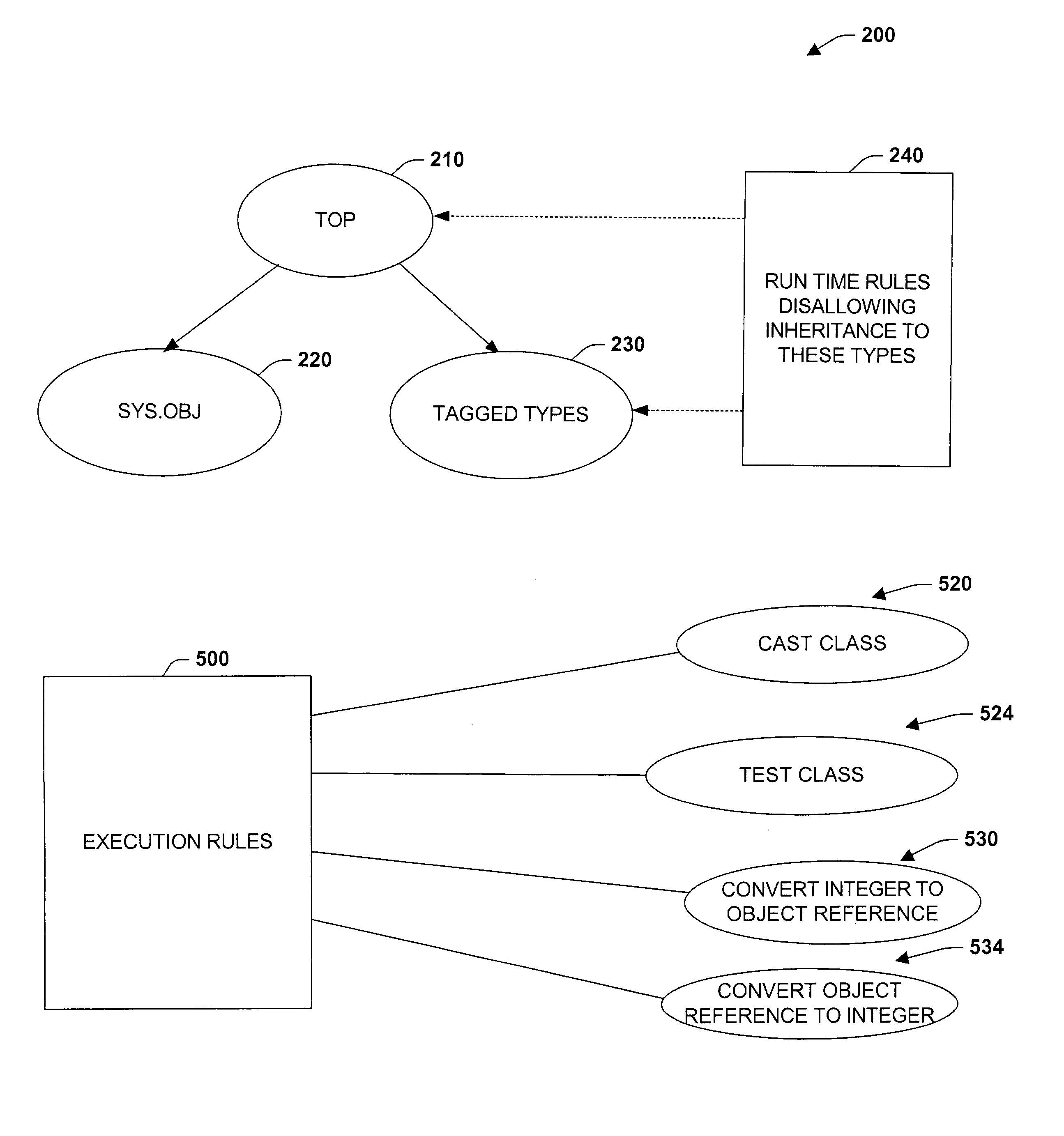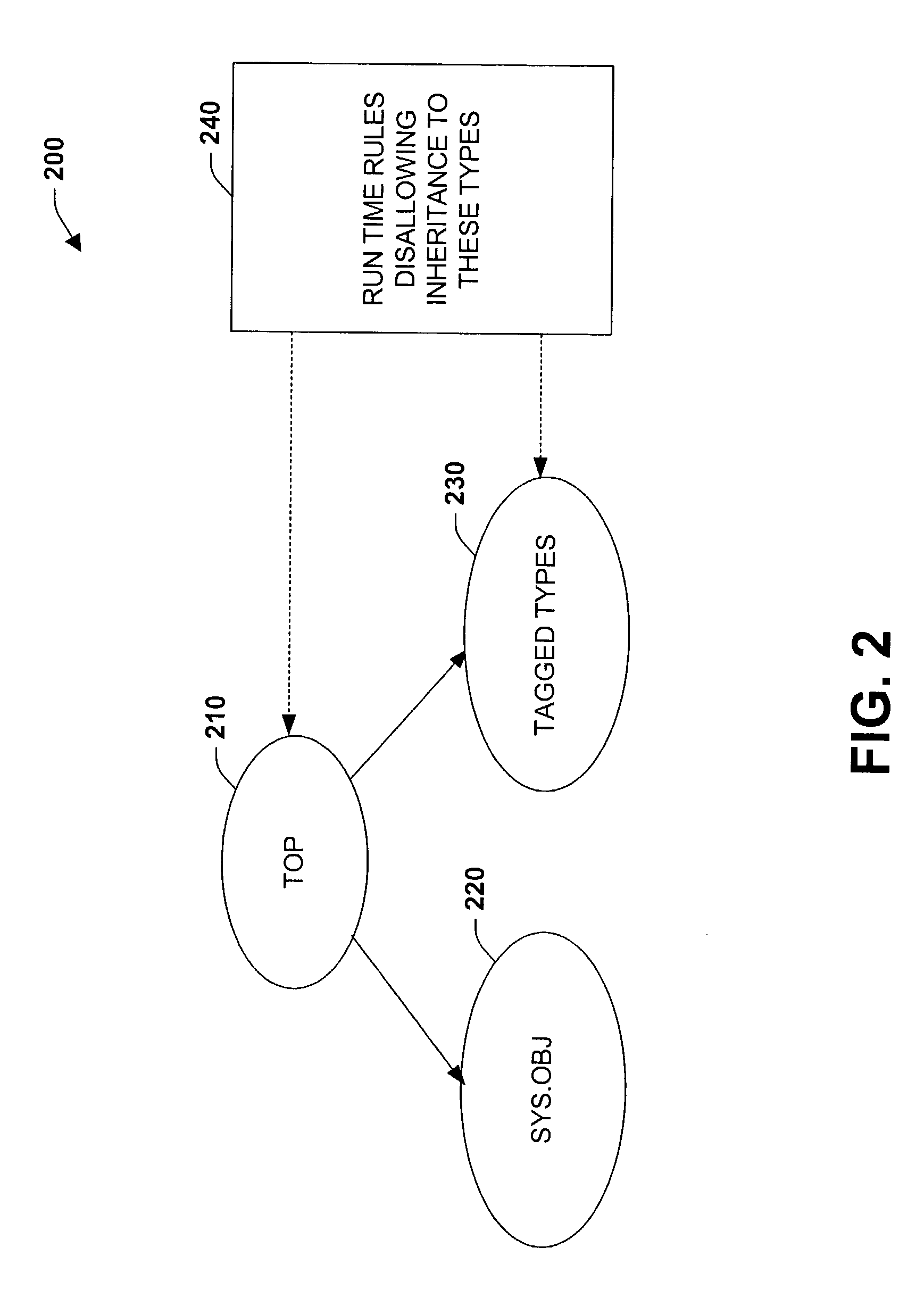Systems and methods for employing tagged types in a dynamic runtime environment
a dynamic runtime environment and type technology, applied in the field of computer systems, can solve the problems of inability to verify the type of encoding, the speed of processor execution performance of operating on boxed values is an order of magnitude slower than working directly on the underlying value, etc., to achieve the effect of facilitating proper execution, enhancing code execution performance, and reducing the amount of data associated
- Summary
- Abstract
- Description
- Claims
- Application Information
AI Technical Summary
Benefits of technology
Problems solved by technology
Method used
Image
Examples
Embodiment Construction
[0025]The present invention relates to systems and methods that facilitate dynamic programming language execution in a managed code environment. A class component is provided that declares an inheritance hierarchy for one or more tagged values associated with a dynamic programming language. During execution of the tagged values, a rules component mitigates user-defined types from inheriting or deriving properties from the tagged values in order to support a type safe runtime environment. A bifurcated class tree is provided that defines non-tagged type elements on one side of the tree and tagged type element values on an alternate branch of the tree. The rules component analyzes runtime extensions that help to prevent data from one component of the tree deriving or inheriting properties from another component of the tree. The runtime extensions include such aspects as cast class extensions, test class extensions, and conversion class extensions for converting data types from one clas...
PUM
 Login to View More
Login to View More Abstract
Description
Claims
Application Information
 Login to View More
Login to View More - R&D
- Intellectual Property
- Life Sciences
- Materials
- Tech Scout
- Unparalleled Data Quality
- Higher Quality Content
- 60% Fewer Hallucinations
Browse by: Latest US Patents, China's latest patents, Technical Efficacy Thesaurus, Application Domain, Technology Topic, Popular Technical Reports.
© 2025 PatSnap. All rights reserved.Legal|Privacy policy|Modern Slavery Act Transparency Statement|Sitemap|About US| Contact US: help@patsnap.com



